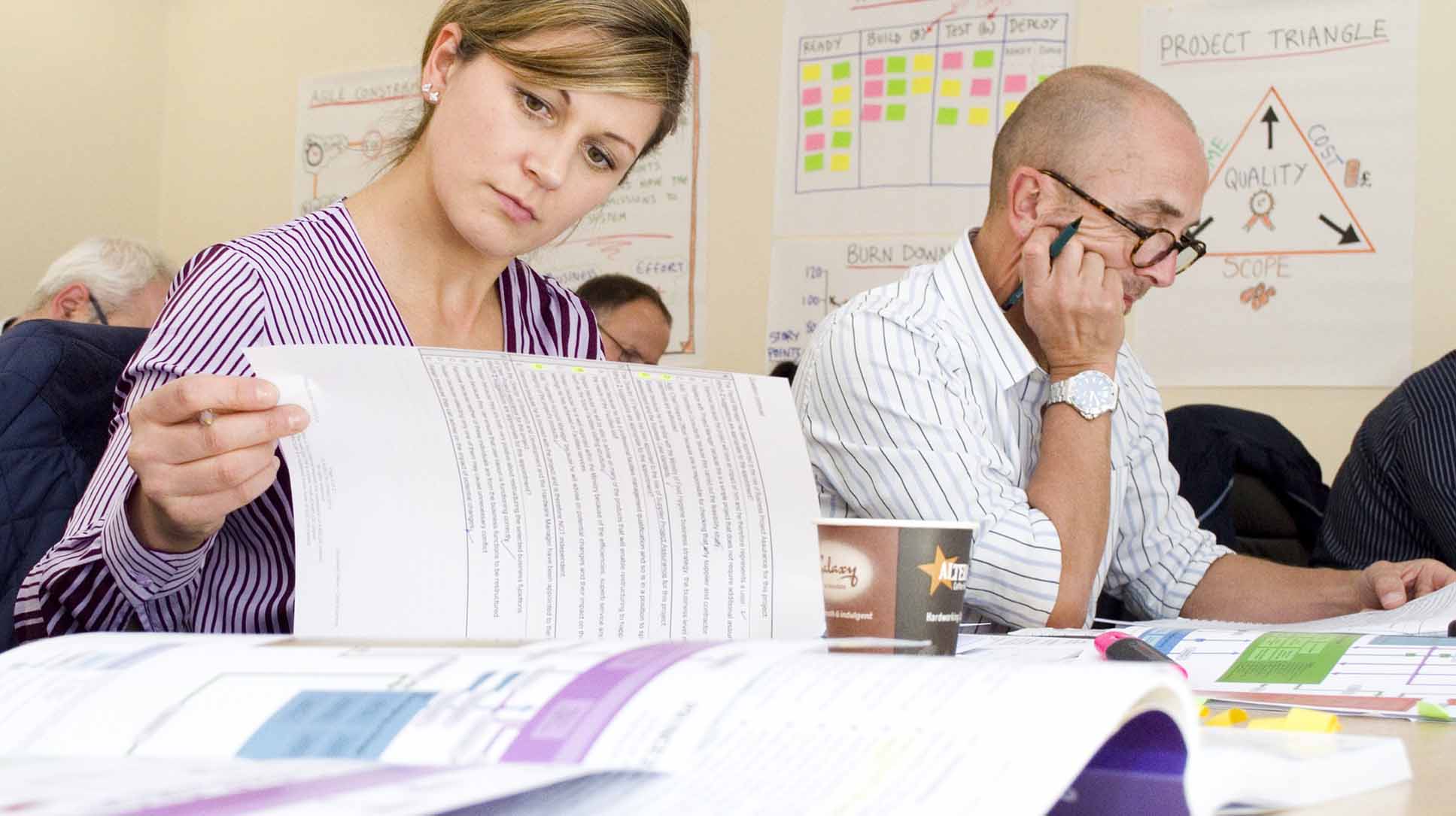Project Assurance Resources
Identifying Project Risks
The information in this guide is intended for general purposes only. For more specific guidance around your organisation’s projects, please get in touch with our team.
In this section, you will find:
- A risk assessment done early catches more issues
- Why detailed business and risk analysis can reduce the chance of a disaster
- Stakeholder interviews before the project gets started to find where the gaps might be
- Project steering committee brainstorm
- Project team resource risks
- External vendor risks
- Market changes or evolving user needs
- Technology and security risks
- Legal and regulatory risks
- Environmental risks
- Stakeholder sign off stand offs
- ‘Key person’ risks
- Engage independent QA expertise to find risks in your business’ blindspots
- Where to next?
But how and when should risk identification occur for a project? There’s many important moments in a project’s lifespan, so when should this process start? And how might businesses uncover more project risks? In this guide we cover some of these big questions and more.
A risk assessment done early catches more issues
The risk assessment of a project and the business that surrounds it should be done as early as possible. As soon as a project passes the business case stage and moves into planning, there are already risks present that should be captured. When the risk assessment is conducted as part of determining the project’s feasibility, the planning itself can work around potential roadblocks.
Remember a risk can present as a stakeholder that won’t sign something off, a functionality that may or may not be able to be delivered or a shift in the market that could make the project’s outcomes less fit for purpose – there’s no one single type of risk but multiple – compliance, legal, financial, reputational to name just a few. The earlier this assessment can be done (at strategy and delivery levels), the more prepared everyone is to face and handle these.
Why detailed business and risk analysis can reduce the chance of a disaster
Understanding the business as it stands today and the changes the project will affect within it helps to build a picture of risks by modelling out situations in which those changes cause an issue. While not the most optimistic of business processes, risk analysis at detail gives those involved the chance to write out ‘what if’ scenarios. The business and the project both need to be closely assessed for risks as issues can arise out of either once the project’s underway.
Business risks for a project might be things like:
- Teams are not equipped to accommodate the changes of the project (e.g. a new system)
- Budget for other projects may take precedence and therefore stall this project.
Risks that are more associated with the project deliver itself can include things like:
- The system or stack of platforms don’t provide adequate security protection of data.
- The capability of the resource available doesn’t meet the needs of the project.
- Available technologies don’t adequately provide the functionality that the project requires.
Every project is different, but there will be typical risks associated with a people-based project vs. a technology-based project.
When the business proceeds without risks identified, the agility to change course if these risks come true is simply not there. Businesses may steer directly into a problem with no forewarning or game plan to get out of it. It’s in these scenarios where the project suffers from threat of failure – such as there not being enough budget to take remedial action to get things back on track.
Conversely, a business with project risks well identified and discussed brings not only the preparation to deal with these better, but will have indicators of these risks well before they arise. Identifying risks properly guides decision making during the entire process of delivery.
Stakeholder interviews before the project gets started to find where the gaps might be
Stakeholders involved in your risk assessment do something else; create buy-in to the project itself. These conversations will not simply be around the risks of the project, but offer a good platform to discuss the project’s benefits and objectives. When a stakeholder feels more involved, earlier, they’re often more responsive to a project and may prioritise their input to that work.
Project steering committee brainstorm
The output of this brainstorm can be captured on a risk register along with other analysis and discussions pre and during the delivery phase.

Project team resource risks
The first is that of the project team itself. The project team is responsible for the delivery of the work and consists of project management and different technical and specialist roles depending on the objective. A project based upon establishing or improving technology may include developers, tech leads, front end designers and any other capabilities determined as being required for delivery.
A project team’s risks are commonly associated with the people in the team. Are they efficient in executing the work to a project timeline? Is the quality of the work to the standard needed for satisfactory delivery? Are there enough of the right kinds of people with the needed skill sets? And what risks are there of staff leaving? For longer-term projects there’s often more risk of turnover and the interruptions this may cause to delivery. Despite many projects’ resources including contractors, there is still an onboarding and up to speed process that new team members require – this undoubtedly creates delays in the completion of work.
Businesses may choose a number of ways to mitigate this risk, such as ensuring team members are well looked after, paid properly, have sensible expectations set of them and protected against distracting things like stakeholder scope creep.
External vendor risks
Vendors bring with them many benefits, such as taking off the load and overhead of staff that may only be required for very specific parts of the project. They also offer specialist expertise that your organisation can ultimately save money and deliver a better result by engaging with.
There are risks too, such as the delivery of work not meeting the objectives or brief. Vendors may also run over budget or over time. Mitigating vendor risks relies upon a stringent procurement and terms of engagement process and ongoing strong relationship management. The business needs to have its scope and requirements crystal clear for a vendor before they begin. Even in an Agile delivery project where requirements are built along the way, knowing what the overall end capability needs to do before starting is important. Once the work has been accurately reflected, there’s a better chance of the deliverable being fit for purpose. Organisations should also take the RFP process seriously, with evidence for similar projects the vendor has supplied for being made available.
Market changes or evolving user needs
The market changes – no project team can anticipate this. But setting the business up to win through a more segmented approach to projects can protect against the expensive mistakes.
Technology and security risks
The sheer number of variables at play with an enterprise-level or public organisation’s technology project can be daunting. Risk assessment in these situations requires a level of detail that may warrant help from specialist expertise. It’s common for large digital transformations to go through a year or more of requirements, assessment and planning before moves are made. For high stakes changes, sometimes this is simply necessary.
Legal and regulatory risks
Environmental risks
How your organisation identifies these risks depends on the personnel at your disposal internally, within your assurance partners or specialist environmental consulting partners. Also involved will be your PR, comms and marketing departments should there be any potential for customer or media aversion to your activity from an environmental standpoint.
Stakeholder sign off stand offs
Mitigating stakeholder sign off delay risk comes through clear scope, early involvement and relationship building, as well as ongoing communication and of course the quality of the delivery by the project team.
‘Key person’ risks
Project teams should also avoid total sole ownership of deliverables, with back up staff who are at the very least informed about the piece of work in place. The key person risk is another reason why good governance, reporting and documentation is such an effective safety net.
Engage independent QA expertise to find risks in your business’ blindspots
Risk is a tricky part of getting a project primed and ready for success. And it doesn’t just stop being an issue once you’ve started; adding new risks to your register during the project is important. Having independent QA expertise to help guide you through the process of identifying risks (and help to identify risks themselves) is well-worth it for organisations when there’s significant time or money at stake.
A misconception many make about quality assurance is that it’s reserved for the big enterprise or public sector departments only. In reality, many medium-sized New Zealand businesses are conducting projects that present many risks that could be helped with a quality assurance partner on board.
Where to next?
Read our other project resources:
Setting project milestones
Staying on track isn’t just a matter of delivering on time, but controlling costs too. We offer some useful tips when setting project milestones.
Learn More >>
How to avoid project failure
Project failure is something every organisation wants to avoid. We touch on some of the approaches to preventing things going wrong.
Learn More >>
Identifying project risks
Risks exist in all organisations. It’s how we prepare, adapt and navigate these risks that makes projects successful. Read our guide on spotting and dealing with risks to a project.
Learn More >>
Understanding project governance
All the structure and processes around how a project is delivered can mean the difference between a successful project or not. Learn what governance is and how it can help.
Learn More >>
What causes scope creep
Scope creep affects every project manager or project team member at some point in their career. In this guide, we explore what some of the causes are.
Learn More >>
Managing project stakeholders
In this guide, we offer some tips for managing stakeholders to keep relationships positive and projects on track.
Latest Project Assurance Articles
Not Enough People And Too Much to Do? (Are You Being Too Ambitious?)
Ambition isn’t a bad thing in a project. But there is often a missing link between the available resources and the objectives outlined in a project plan.
Breaking Projects Into Smaller Pieces
Does a project or programme have to always be large and complicated? The answer is ‘absolutely not’, and more Kiwi organisations should consider going small.
How Assurance Is Helping Over The Tasman
We recently read a fascinating article about the role that quality assurance played in improving project efficiency and delivery in New South Wales.
Why Projects Fail [And What To Do About It]
Our teamwork with organisations to help deliver projects successfully. Part of this work is guiding our clients through the pitfalls they may encounter.
Explore our other QA services
Get In Touch
IQANZ Limited
Level 2, PSA House
11 Aurora Terrace
PO Box 11-757 Wellington,
New Zealand
04 473 4340
info@iqanz.com










![Why Projects Fail [And What To Do About It]](https://iqanz.com/wp-content/uploads/2021/05/IQANZ_blog_26Jan_5-1050x675-1-400x250.jpeg)





